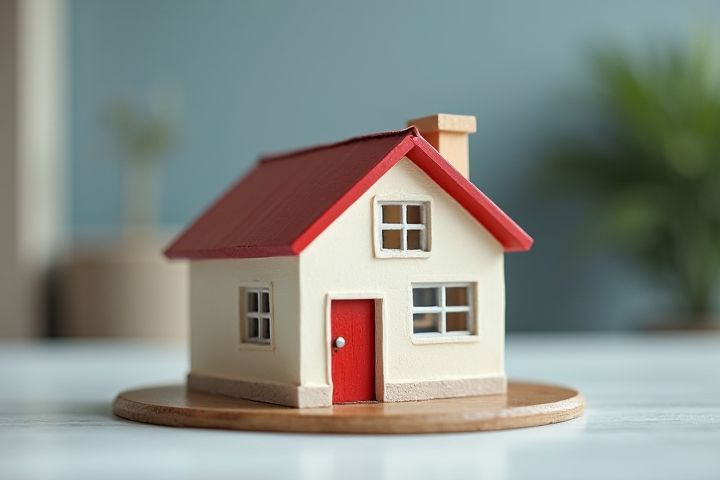
House insurance costs vary widely based on factors such as the location, property value, and coverage type. In general, you can expect to pay an annual premium ranging from $800 to $2,000 for standard homeowner's insurance. Higher-risk areas, such as those prone to natural disasters, may result in increased rates. The coverage limits and deductible you choose also significantly influence your overall premium. To find the best rates, it's wise to compare quotes from multiple insurance providers tailored to your specific needs.
How Much Is House Insurance
Location
House insurance costs significantly depend on location due to factors like local crime rates, weather conditions, and proximity to fire services. Areas prone to natural disasters, such as floods or earthquakes, often see higher premiums to account for potential damages. Urban locations may have elevated rates due to increased theft and vandalism risks, while suburban and rural areas typically offer lower premiums. Understanding your specific location's risks can help you find the most suitable coverage for your needs.
Home value
The cost of house insurance primarily depends on your home's value, as it serves as a key factor in determining coverage limits and premiums. Typically, policies cover the full replacement cost of your home, which means the more valuable your property, the higher your insurance premium will be. Insurers assess various elements, including the location, age, and construction materials of your home, alongside the local real estate market. To ensure adequate protection, regularly evaluate your policy and adjust your coverage to reflect any changes in your home's value.
Coverage level
House insurance premiums vary significantly depending on the coverage level you choose. Basic policies often cover dwelling, liability, and personal property, while comprehensive plans can include additional protections like natural disaster coverage, personal belongings replacement, and loss of use. The higher the coverage limit, the higher your premium will typically be; however, this also offers more extensive protection for your assets. Evaluating your specific needs and the value of your home can help you select an appropriate coverage level that balances affordability with adequate protection.
Deductible amount
House insurance premiums vary significantly based on the deductible amount you select, which is the amount you pay out-of-pocket before your insurance coverage kicks in. Generally, higher deductibles lead to lower monthly premiums, making this choice crucial for budget-conscious homeowners. For example, opting for a $1,000 deductible can reduce your premium costs, while a $500 deductible may result in higher monthly payments. It's essential to balance your financial situation with potential risk exposure when determining the right deductible for your home insurance policy.
Claims history
House insurance premiums are significantly influenced by your claims history, as insurers assess risk based on past incidents. A history of multiple claims can lead to higher premiums, reflecting the likelihood of future claims. Conversely, a clean claims record often translates to lower rates and potential discounts from insurance providers. To optimize your coverage and costs, maintaining a low claims frequency is essential, as it positively impacts your insurability and financial security.
Home age and condition
Home insurance costs significantly depend on your property's age and overall condition. Older homes may have outdated wiring, plumbing, or roofing materials, resulting in higher premiums due to increased risk of damage or claims. Conversely, well-maintained homes often enjoy lower insurance rates, as their structural integrity and modern updates mitigate potential hazards. When evaluating coverage options, be sure to consider these factors, as they directly affect your premium and the level of protection you receive.
Security features
House insurance premiums can vary significantly based on the security features of your property. Homes equipped with advanced security systems, such as surveillance cameras, motion detectors, and alarm systems, often receive discounts on insurance rates due to the reduced risk of theft and damage. Insurers typically assess your home's security measures when calculating coverage, potentially leading to savings on your overall premium cost. Investing in robust security features not only protects your home but can also lead to lower insurance expenses, enhancing your financial security.
Credit score
Credit scores significantly impact house insurance premiums, with many insurers using them as a key determinant in calculating risk. Homeowners with higher credit scores, generally above 700, often enjoy lower rates, sometimes saving up to 20% compared to those with lower scores. Conversely, individuals with scores below 600 may face much higher premiums, signifying increased risk to insurers. By improving your credit score, you could potentially reduce your home insurance costs and increase your overall financial stability.
Insurance provider
The average cost of homeowners insurance in the United States is approximately $1,500 annually, but this can vary significantly based on the insurance provider, location, and coverage level. Major insurance providers like State Farm, Allstate, and Geico often offer competitive rates, but also consider factors such as your property's age, value, and claims history. For example, State Farm's rates can range from $900 to $2,000 per year, while Geico may provide discounted premiums for bundling policies. It's essential to compare quotes from multiple providers to find the best coverage for your specific needs and budget.
Discounts and bundles
House insurance premiums can vary significantly based on several factors, but many providers offer discounts that can substantially lower your costs. You may qualify for multi-policy discounts by bundling your homeowner's insurance with other policies, such as auto or life insurance, offering significant savings. Additionally, discounts may be available for installing safety features like security systems or smoke detectors, rewarding you for enhancing your home's safety. Exploring these options can help you optimize your house insurance expenses while maintaining the necessary coverage.
